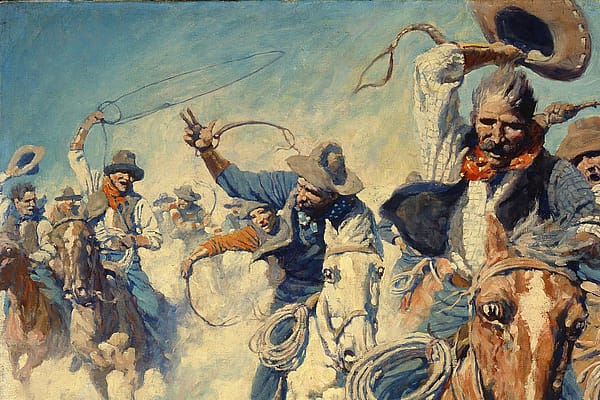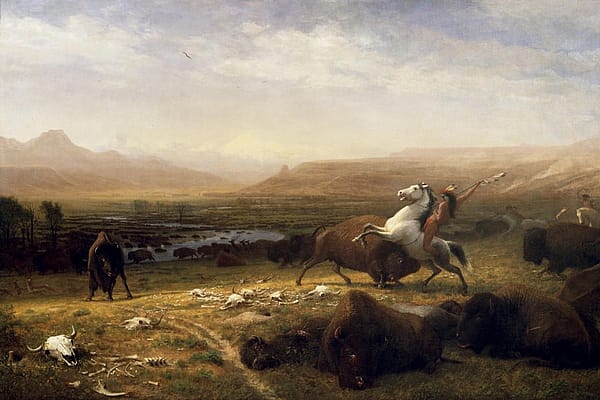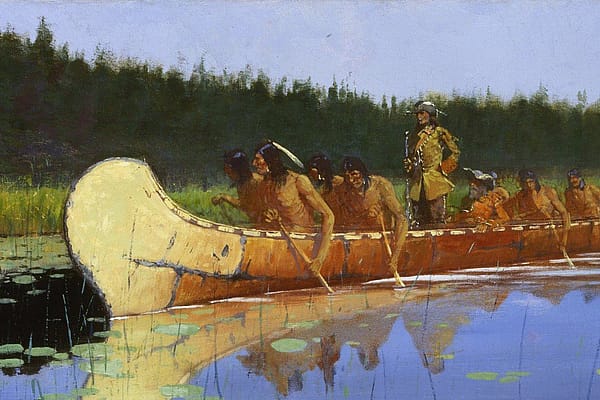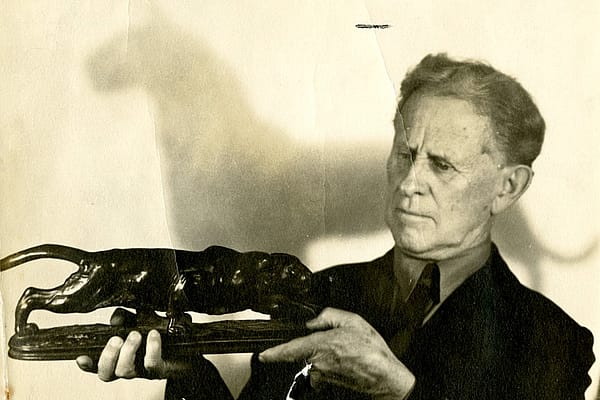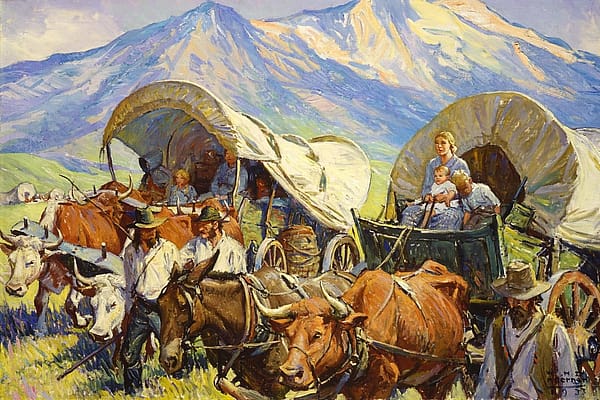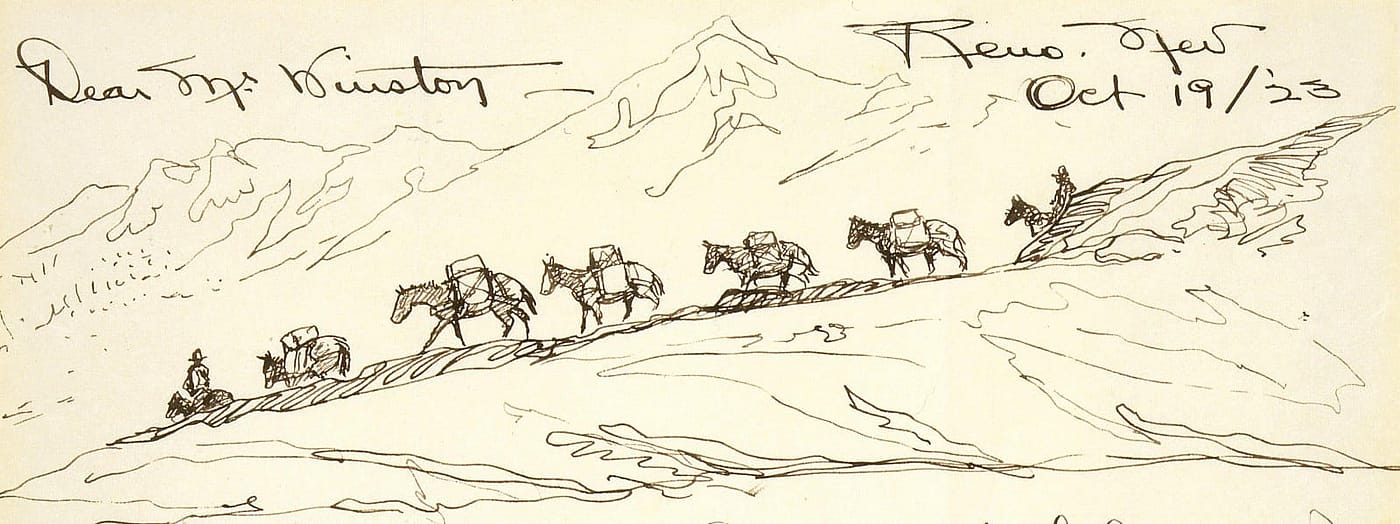
Everything You Need to Know About Will James
You have questions about Will James … we have the answers. Here’s everything you need to know about James in a nutshell.
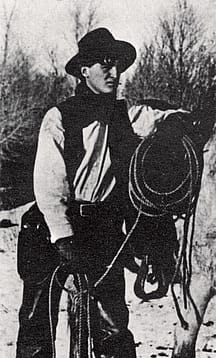
Q: What is Will James best known for?
A: Will James is best known as an author-illustrator. He became one of the most influential western artists and writers of his generation and spanned the time period between Charles M. Russell and the contemporary artists of today.
Q: How many James works do you have in your collection?
A: The Whitney Western Art Museum has six works by Will James in the collection. James created as many as 1,500 drawings, approximately 45 oils, and a handful of watercolors during his career. Many of his works are scattered across the American West in museums and private collections.
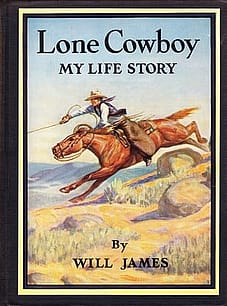
Q: How many books did James write?
A: James wrote and illustrated 23 books during his lifetime, all virtually based on his own life experiences. Three of his books were adapted into films – Sand (1949); Lone Cowboy (1933); and Smoky (United States: 1933, 1946, and 1966; Soviet Union: 1985). For a complete list of Will James books, click here.
Q: Did James have any formal training?
A: Very little. He spent only a few months attending classes at the California School of Fine Arts in San Francisco in 1919. He would try his hand at formal education once more around 1921 – this time on a scholarship to Yale University School of Fine Arts. Again, he spent only a few months attending classes before heading back to the American West.
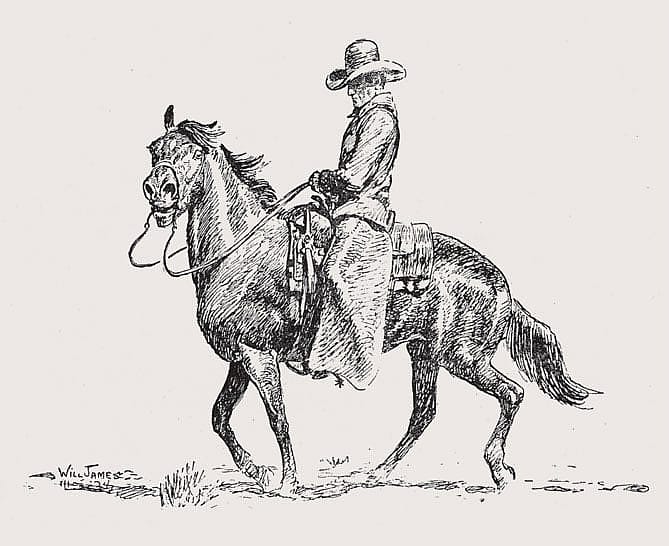
A cowboy sketch from the Will James book, “Smoky.” James ended his last book, “The American Cowboy,” with the words, “The cowboy will never die.” Willis McDonald IV Collection. 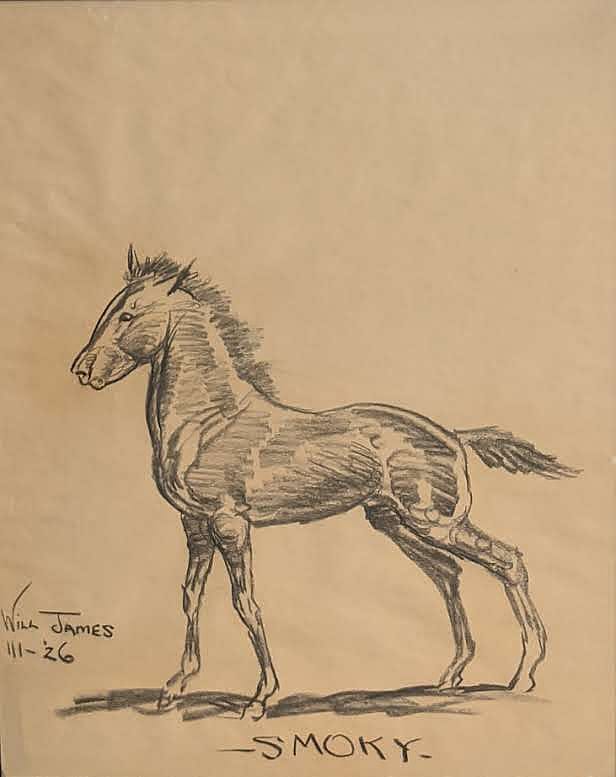
Smokey, 1926. Charcoal on paper. Gift of Joyce Caldwell Surdam and Ronald Clarence Surdam in memory of Frances Rush Caldwell and Charles E. Rush. 5.13
Q: How did James’s work evolve throughout his career?
A: His preferred method of illustration was pen and ink and pencil. His brief stints in formal education provided him more contacts than it did new methods and techniques. At the time of his death in 1942 his art had deteriorated in style and definition due to his debilitating addiction to alcohol. Unfortunately, James’s art never fully matured like his contemporaries. Perhaps it was because he chose to limit his own artistic range or because it was the ways in which his works were display – books and magazines – that marginalized his work to the far corners of western American art. His art was limited by the audiences who read his tales. Nevertheless, his style, technique and the subjects he depicted stayed constant throughout his career.
Q: What influenced and inspired James’s art?
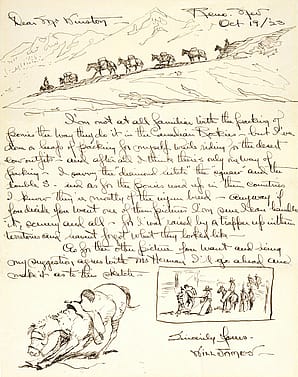
A: James’s real-life experiences in the West provided all the inspiration he needed to create his art and stories and enthrall viewers and readers alike. He looked to the past for artistic inspiration as his works reimagined cowboy life and the American West before barbed wire and the advancement of civilization, industrialization and urbanization. Ironically, most of his fans lived in urban areas. Much of his work included the cowboy, horse and cattle – three things James believed to be indispensable to his way of life and to the American West. His personal fictional backstory provided the perfect setup for his art and stories.
James admired the life and art of Charles M. Russell. Russell’s works, words of encouragement and friendship meant a great deal to James. James even emulated Russell’s illustrated letters and often used this when communicating with his patrons and publishers.
Will James may be a largely forgotten name among the masses, but he is widely recognized and admired among collectors, contemporary western American artists and singer-songwriters of today.
Q: Did James market his own work?
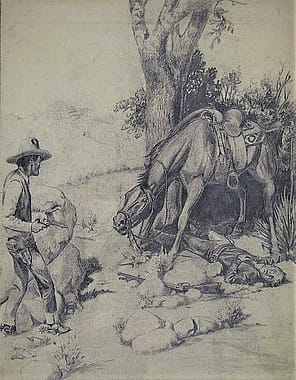
A: Yes! James actively submitted his illustrations to the popular magazines of the time, including Scribner’s Magazine, Saturday Evening Post, Ladies Home Journal and Sunset Magazine. More importantly, James established connections throughout the West that would prove to be instrumental in marketing his work. His time spent in the hospital after his bucking accident garnered him a letter of introduction from a fellow patient to the editor of Sunset Magazine. The friendships formed with Maynard Dixon and Harold von Schmidt assisted James in providing him contacts with publishers and suggesting useful material. His first published illustration, A One-Man Horse, was featured in Sunset Magazine in 1920. In 1923, Scribner’s offered James a contract for a self-illustrated book – Cowboys North and South, thereby beginning his successful career as an author-illustrator.
Q: Where did James live?
A: James was born Joseph Ernest Nephtali Dufault in 1892 in the Québec parish of Saint-Nazaire-d’Acton in Canada. He left home in 1907 to fulfill his dream of becoming a cowboy. By 1910 he had crossed the Canadian-U.S. border into Montana and changed his name to Will James. At one time or another he called Montana, Wyoming, Idaho, Nevada, California, Arizona, New Mexico and Texas home. He lived a nomadic life during his early years in the U.S., but ultimately called Montana his home. He set up his Rocking R Ranch home and studio just south of Billings, Montana.
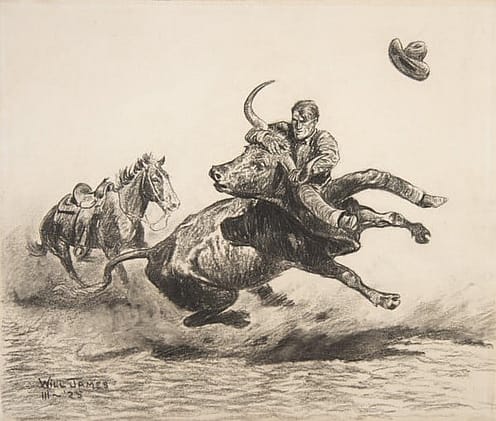
Q: Where can I learn more about Will James?
A: You can learn more about Will James’s life and work here. The Will James Society celebrates the author-artist by donating reproductions of his books to communities across the United States and Canada and renewing interest in the artist. The Big Horn County Historical Museum in Hardin, Montana houses his works and cabins once part of his Rocking R Ranch, and the Yellowstone Art Museum, located in Billings, Montana, houses the largest public collection of works by Will James. Aside from the Buffalo Bill Center of the West, you can also find his works in the collections of the National Cowboy & Western Heritage Museum in Oklahoma City; Gilcrease Museum in Tulsa, Oklahoma; Amon Carter Museum of American Art in Fort Worth, Texas; Phippin Museum in Prescott, Arizona; Minckler Gallery in Billings, Montana; and the Aztec Mill Museum and the CS Ranch, both located in Cimarron, New Mexico.
Written By
Nicole Todd
Nicole Todd was formerly the Curatorial Assistant for the Whitney Western Art Museum. She graduated from the University of Oklahoma, with bachelor’s degrees in Zoology and Art History, and a master’s degree in Art History, with a focus on western American art and a specialization in Will James’s art. As Curatorial Assistant, Nicole engaged in art historical research, supported educational programming, answered public inquiries, and contributed to the Whitney’s online presence.
